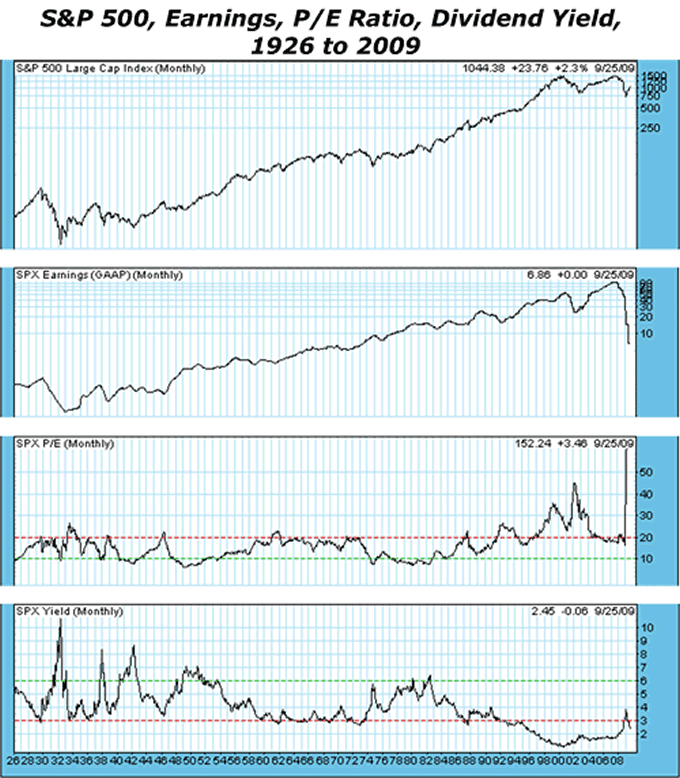Fed Fuelling the Next Stock Market Bubble
Stock-Markets / Liquidity Bubble Sep 30, 2009 - 08:28 AM GMTBy: Claus_Vogt
 Every few weeks the world’s most powerful and influential central bankers — those in charge of the world’s number one reserve currency, the U.S. dollar — come together in what’s called the Federal Open Market Committee (FOMC).
Every few weeks the world’s most powerful and influential central bankers — those in charge of the world’s number one reserve currency, the U.S. dollar — come together in what’s called the Federal Open Market Committee (FOMC).
They discuss the economy, interest rates, financial markets and whatever else they deem important. Then they decide to set the Federal Funds Rate at a level they think is appropriate.
And last week was their week. So today I want to analyze what their decisions mean for the stock market and for you as an investor.
The Fed Statement Reassures A Very Lax Monetary Policy …
 |
| The FOMC meets regularly to decide where to set the Federal Funds Rate. |
After each FOMC meeting, the Fed releases a statement. And the one for September 23, 2009, is very telling in my opinion. Here’s its most important part:
“The Committee will maintain the target range for the federal funds rate at 0 to 1/4 percent and continues to anticipate that economic conditions are likely to warrant exceptionally low levels of the federal funds rate for an extended period.”
As you can see, the Fed is promising a continuation of its extremely lax monetary policy “for an extended period.” So all the recent media talk about a soon-to-begin exit strategy or a normalization of monetary policy was obviously premature. The Fed is reassuring us that there will be easy money for as far as the eye can see.
Why?
Two reasons come to mind:
First, the Fed is still very concerned about the economy … the employment situation is dire … and a double-dip recession is a real possibility.
Second, and more important, is that they know how precarious the banking situation still is. They know that the bad debt problems have not been solved … that most banks would go bankrupt if they had to implement mark-to-market rules … and that the banking system is still on life support.
This Is Important News For the Stock Market
Since the Fed is confronted with two major problems — a shaky economy and an unstable banking system — it’s not worrying about a possible stock market bubble in the making.
Why is this so important?
Just look at the charts below. The stock market has rallied some 60 percent since the March low. But earnings are still very depressed. Hence the classic version of the P/E ratio — using twelve months trailing GAAP earnings — shot to the stratosphere!

Source: www.decisionpoint.com
Twelve-month trailing earnings as of the first quarter 2009 were a mere $6.86 for the S&P 500 making for a P/E ratio of 154. According to Standard and Poor’s, these earnings are estimated to rise to $7.51 in the second quarter, and $7.61 in the third quarter. Then they’re expected to jump to $39.35 in the fourth quarter and $43.58 in the first quarter 2010. Based on this last figure the P/E ratio will decline to 24.
Historically the normal range for this very P/E ratio — based on 12-month trailing GAAP earnings — has been between 10 (undervalued) and 20 (overvalued). Hence even if the corporate sector will see the estimated jump in earnings, the stock market is still very expensive.
Classic stock market valuation metrics show that this is a highly overvalued market. And overvalued markets can stay overvalued for a long time and even become more overvalued — as long as the Fed does not take away the proverbial punch bowl.
This means one of two things …
We’re Witnessing the Next Bubble, Or Earnings Have to Increase Dramatically!
![Fed Promises Easy Money For An Extended Period Fed chief Bernanke's inflationary stance could be the fuel that ignites the next stock market bubble.]](../images/bernanke-federal-market.jpg) |
| Fed chief Bernanke’s inflationary stance could be the fuel that ignites the next stock market bubble. |
Right now I can’t rule out either one. I do, however, lean towards the first. And in reading the Fed’s FOMC statement one thing becomes obvious: If we’re on our way to a new stock market bubble the Fed will not prick it any time soon.
The September 23 statement that I cited earlier is as clear as you can expect from the Fed. Much clearer than anything Greenspan said during his long reign. His famous “irrational exuberance” speech, which was never followed by any action, is a perfect example.
Bernanke is much different …
From the very beginning of his career at the Fed he made it known that he’s a first class inflationist, and he strongly believes prosperity can be achieved by printing money. Now the Bernanke Fed is clearly reiterating this inflationary stance. By doing so the Fed is rubberstamping the current stock market rally and apparently not worrying about a possible bubble!
There is an old Wall Street saying: “Don’t fight the Fed.” I think it’s wise to heed it in today’s environment.
Best wishes,
Claus
This investment news is brought to you by Money and Markets . Money and Markets is a free daily investment newsletter from Martin D. Weiss and Weiss Research analysts offering the latest investing news and financial insights for the stock market, including tips and advice on investing in gold, energy and oil. Dr. Weiss is a leader in the fields of investing, interest rates, financial safety and economic forecasting. To view archives or subscribe, visit http://www.moneyandmarkets.com .
Money and Markets Archive |
© 2005-2022 http://www.MarketOracle.co.uk - The Market Oracle is a FREE Daily Financial Markets Analysis & Forecasting online publication.



